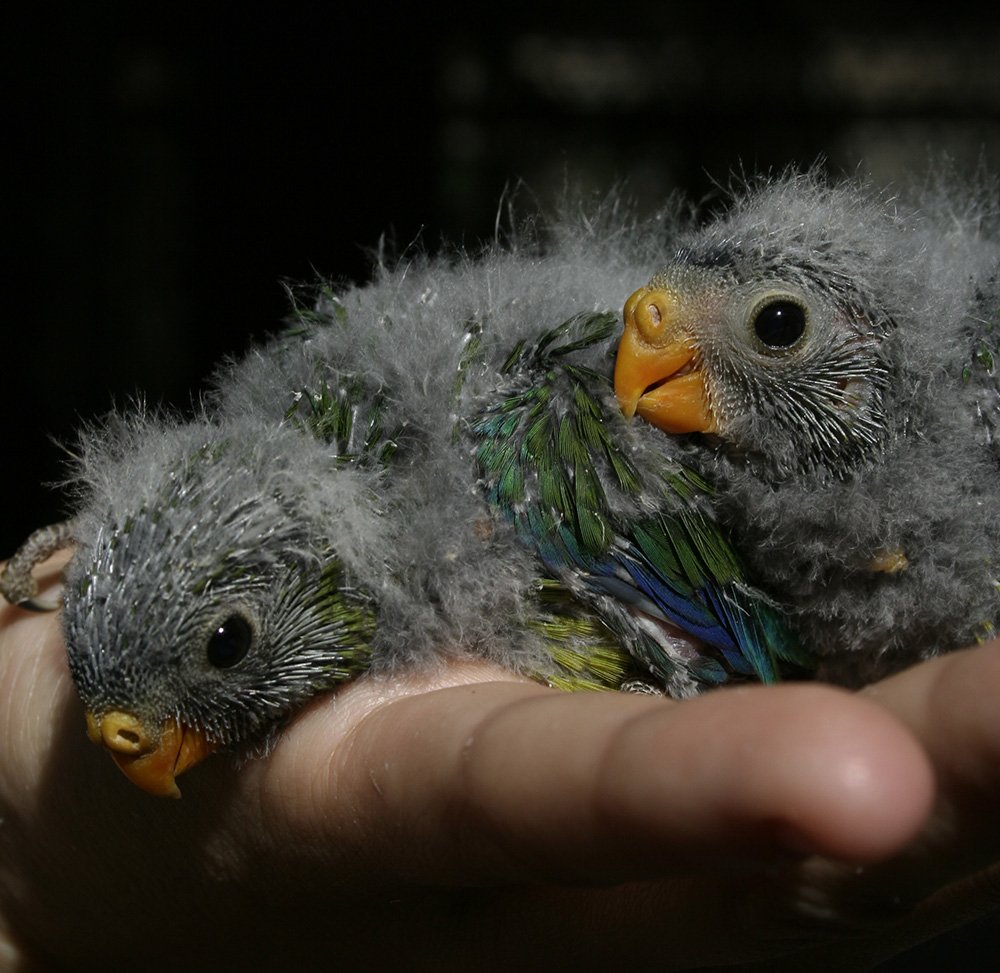Orange-bellied parrot baby boom brings hope

KEEPERS AT HEALESVILLE Sanctuary in Victoria are abuzz after having one of the most successful orange-bellied parrot breeding seasons in years.
Over 100 eggs were laid throughout November and December, about half of which have already hatched, with 31 fledglings successfully leaving their nests.
“It absolutely has been an amazing year,” said Dr Kim Miller, Life Sciences Manager for Conservation and Research at Healesville Sanctuary.
It is a vital step in saving the critically endangered parrot, only 20 of which returned to their breeding ground in Tasmania this summer.
“Numbers have been critically low for the last several years so conservation and intensive management in the wild and captivity is critical for their survival,” Kim explained.
Healesville Sanctuary is one of a number of institutions in Victoria and Tasmania undertaking breeding programs to save the species, with a captive insurance population of over 200 birds across the two states.

Image credit: Healesville Sanctuary
Zoos Victoria began its breeding program over 20 years ago in 1995, and during that time has successfully released 244 of the critically endangered parrots into the wild.
This year’s breeding success has put a smile on keepers’ faces, after a large number of parrots died last season due to an illness – with none able to be released – prompting staff to make some minor adjustments to the program.
“It’s been such a huge turnaround,” Kim said. “It’s really been a morale boost for our staff who were very distressed after losing those birds last year.”
And with many eggs still expected to hatch, it could be a record-breaking season, with keepers hoping to surpass 2014’s massive year which saw 39 fledglings leave the nest.
“We’re optimistic this could be our best breeding season yet,” Kim said. “We’re hoping for 40.”
Complex birds require complex management
The striking parrots are not only beautiful in colour, but are one of only two migratory parrot species in Australia, spending their summers in Tasmania to breed, before crossing the ocean to Victoria and South Australia to feed in autumn.
Kim said a combination of factors including habitat loss and more subtle environmental factors are to blame for the decline, but due to this combination of threats, along with their complex lifestyle and highly social behaviour, management of the species is not straightforward.
With such a small population, the colourful species is also suffering from inbreeding effects – placing even more importance on the breeding program.
“The population is managed quite intensively,” Kim said. “We make sure we’re breeding the most suitable pairs to maintain a genetically robust population.”
Kim said it is an amazing experience to watch the parents rear their chicks, which keepers monitor remotely around the clock from cameras attached to the nesting boxes.
“They’re quite special to observe, teaching their chicks how to be orange-bellied parrots,” Kim explained, adding, “I think as humans we’re drawn to these social animals as we can relate to the family dynamics.”




